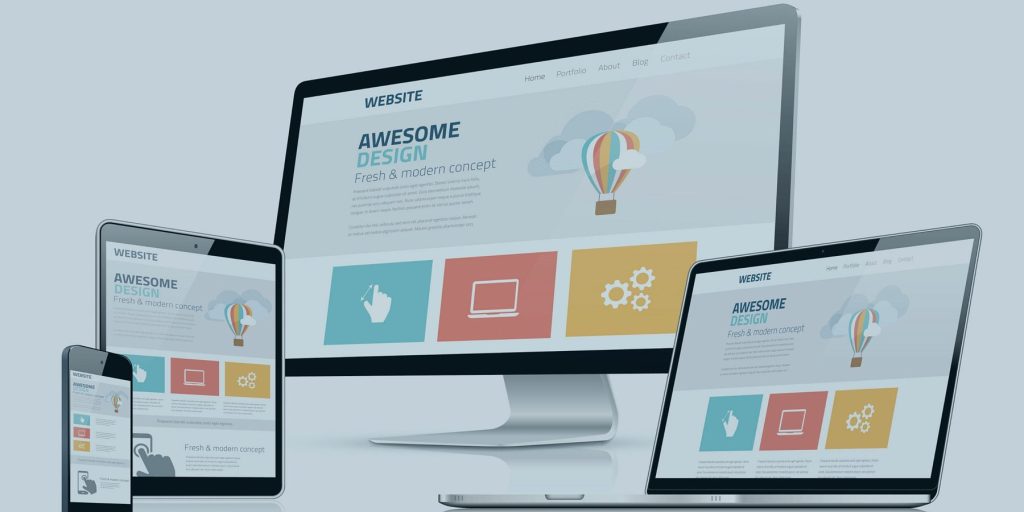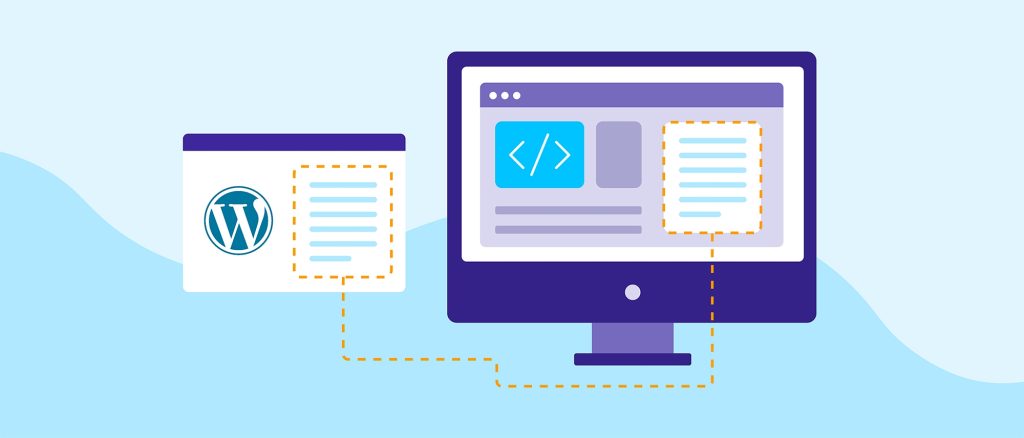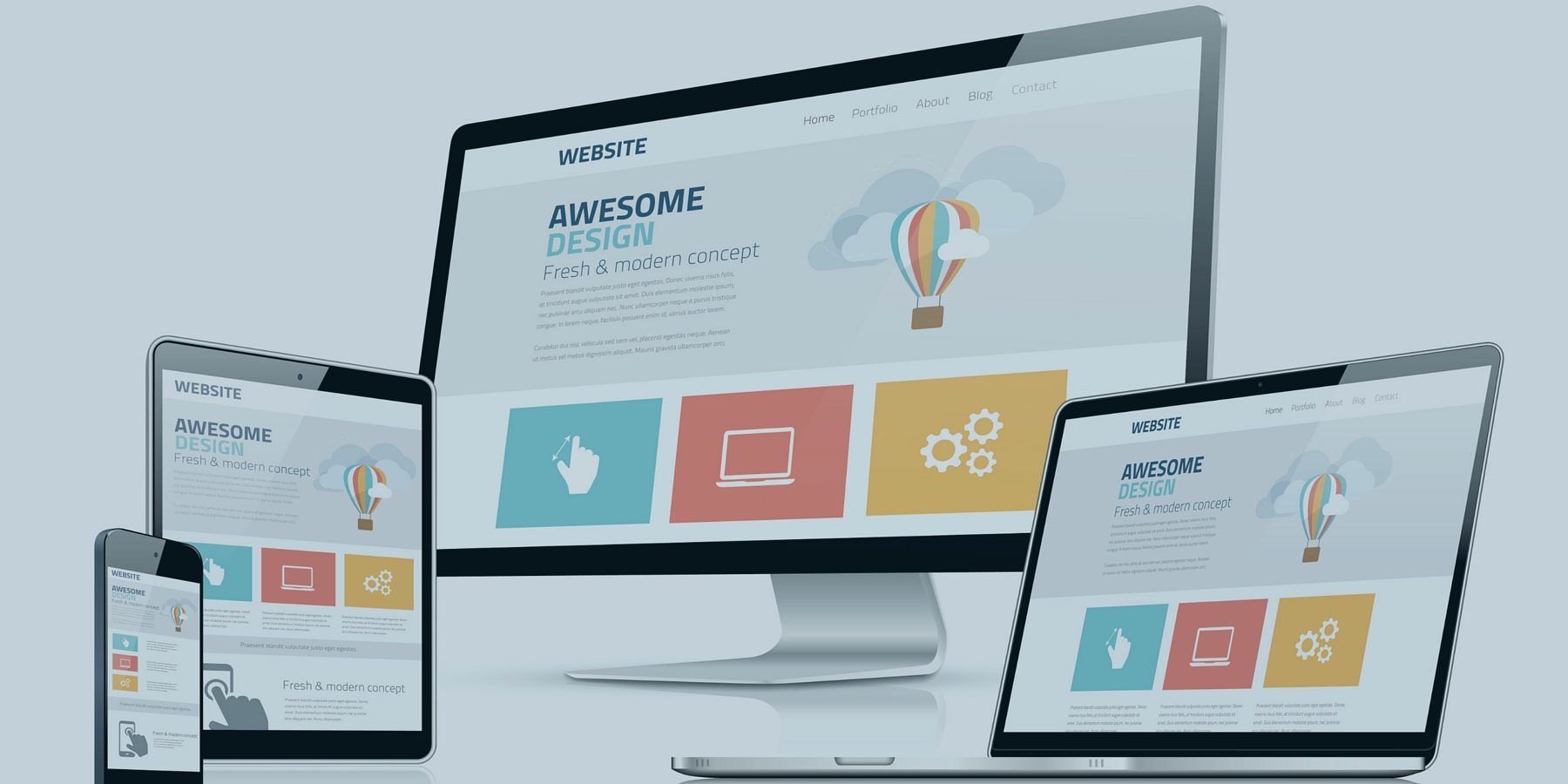Planning a Website – A Comprehensive Guide
Last Updated on February 1, 2024 by Richard Martin Linga
Planning a website is a crucial step in establishing a strong online presence. It’s akin to laying the foundation for a building; without a solid plan, your website may not effectively meet your goals or connect with your target audience. a well-thought-out website does more than just look good. It serves as a powerful tool to tell your story, showcase products, or reach new customers.
It’s not just about aesthetics; it’s about functionality and purpose. In this guide, we delve into the essentials of website planning. From understanding who your website is for, to designing it in a way that appeals to them, each step is important. We will keep things straightforward and easy to grasp, ensuring that even those new to website planning can follow along with ease.
Step by Step Guide in Planning a Website

Step 1. Defining Your Website’s Purpose
Firstly, when planning a website, ask yourself, “What do I want my website to do?” This step is about setting clear goals. Maybe you want to sell products, share information, or showcase your work. Understanding your purpose guides every other decision you make.
Step 2. Knowing Your Audience
Next, think about who will visit your website. Are they young professionals, busy parents, or hobby enthusiasts? Knowing your audience helps you create a site that speaks to them. It’s like choosing the right words for a conversation.
Step 3. Choosing the Right Domain Name
Your domain name is your web address. It’s how people find you online. Pick a name that is easy to remember and reflects what your website is about. For instance, if you’re offering business ideas in the Philippines, choose a name that hints at that.
Step 4. Selecting a Hosting Provider
A hosting provider is where your website lives on the internet. Think of it as renting space online. There are many options, from affordable shared hosting to more powerful dedicated servers. An SEO specialist in the Philippines can help you understand which option is best for your needs.
Step 5. Planning the Design and Layout
Now, let’s talk about design. Your website’s look and feel should match your purpose and audience. Keep it simple and user-friendly. Use colors and images that appeal to your visitors. Also, ensure your layout is easy to navigate.
Step 6. Developing Your Content Strategy
Content is what keeps people coming back to your website. Plan what you’ll write about or show on your site. It could be blog posts, product descriptions, or a portfolio of your work. Remember, good content is key to attracting visitors.
Step 7. Understanding SEO Basics
SEO, or Search Engine Optimization, makes your website easy for search engines to find. Use the right keywords, like ‘SEO outsourcing Philippines‘ or ‘PPC specialist,’ to improve your site’s visibility. Simple SEO practices can make a big difference.
Step 8. Incorporating Mobile Responsiveness
More people use their phones to browse the internet. So, make sure your website looks good on mobile devices. A WordPress developer can help create a responsive design that adjusts to different screen sizes.
Step 9. Setting Up Analytics
Analytics tools show you how people find and use your website. They provide valuable insights, like which pages are popular or where your visitors come from. Use this data to improve your website over time.
Step 10. Launching Your Website
After all the planning a website and work, it’s time to launch your website. But, the work doesn’t stop there. Keep updating your site, adding new content, and engaging with your visitors.
Step 11. Promoting Your Website
Finally, let people know about your website. Use social media, email marketing, or even PPC advertising to attract visitors. So, if you’re looking for a side hustle in the Philippines, promoting your website can be a great way to start.
Design Considerations for an Effective Website

When planning a website, design is key. A well-designed website is not just about looking good. It’s about making it easy and enjoyable for people to use. Good design helps visitors find what they need quickly and easily.
Creating a User-Friendly Layout
Start with a layout that’s simple and clear. Also, your main menu should be easy to find and use. Organize your content so people can find what they’re looking for fast. In other words, a good layout guides your visitors through your site without confusion.
Choosing the Right Color Scheme
Colors can set the mood of your website. They can make it feel professional, fun, or relaxing. Choose colors that match your website’s purpose and appeal to your audience. For example, if your site is about business ideas in the Philippines, you might use blue and green to convey growth and trust.
Selecting Appropriate Fonts
Fonts, or the style of your text, are important too. They should be easy to read and fit the tone of your site. So, avoid using too many different fonts. Stick to one or two that are clear and work well together.
Making Your Website Accessible
In addition, accessibility means making sure everyone can use your website, including people with disabilities. Use text that’s easy to read and add descriptions to your images. An SEO specialist in the Philippines can offer more tips on making your site accessible.
Responsive Design for All Devices
Your website should look good on any device, from computers to smartphones. This is called responsive design. For instance, a WordPress developer can help you make sure your site adjusts to different screen sizes.
Using Images and Videos Effectively
Images and videos can make your website more engaging. But, use them wisely. They should be high quality and relevant to your content. Also, make sure they don’t slow down your website’s loading time.
Incorporating SEO in Design
SEO isn’t just about content. It’s also about how your website is built. For instance, a well-designed website can help your SEO efforts. For example, fast loading times and mobile-friendly design are good for SEO. A PPC specialist can help you understand how design affects your website’s performance in search engines.
Testing and Improving Your Design
After you design your website, test it out. See how it looks on different devices and browsers. Get feedback from others, and be ready to make changes. So, always aim to improve your website’s design for your visitors.
In planning a website, design plays a big role. Also, it’s not just about making your site look pretty. It’s about creating a positive experience for your visitors. By focusing on a user-friendly layout, appropriate color scheme, and responsive design, you can make a website that stands out and serves its purpose well. Therefore, good design is key to a successful website.
Content Strategy and SEO Best Practices in Website Planning

A good content strategy is crucial when planning a website. It’s about deciding what to write and share on your site. After that, think about what your audience wants to know or see. Your content should be interesting, useful, and relevant to them.
Writing for Your Audience
First, write in a way that speaks to your audience. So, if your site is about business ideas in the Philippines, use examples and language that resonate with aspiring entrepreneurs. Also, keep your writing simple and friendly. It’s like having a conversation with your readers.
Creating Valuable and Engaging Content
In addition, your content should offer value. This could be through helpful tips, insightful information, or entertaining stories. Make your content so good that people want to come back for more. Engaging content also encourages visitors to share your site with others.
Using Keywords Effectively
Keywords help people find your website through search engines. Also, use keywords naturally in your content. For example, if you’re an SEO specialist in the Philippines, include that phrase in your articles. But don’t overdo it. Too many keywords can make your writing hard to read.
Understanding SEO Basics
SEO stands for Search Engine Optimization. For instance, it’s about making your website easy to find online. Use clear, descriptive titles and headings in your content. Also, add links to other pages on your site. This helps search engines understand what your site is about.
Optimizing Your Website for Search Engines
Make sure your website is set up for SEO. This includes having a fast loading speed and making your site mobile-friendly. Also, a WordPress developer can help with these technical aspects. Good SEO makes your site more visible on search engines like Google.
Building Quality Backlinks
Backlinks are links from other websites to yours. They can improve your website’s authority and ranking in search results. So, aim to get backlinks from reputable and relevant websites. This can be through guest posts or collaborations.
Regularly Updating Your Content
Keep your content fresh and up-to-date. This shows search engines that your site is active and relevant. Regular updates also give visitors a reason to return. In other words, it’s like adding new chapters to a book, keeping the story interesting.
Using Analytics to Improve Your Content
Analytics tools show you how people use your website. So, you can see which pages are popular and how visitors find your site. Use this information to improve your content and SEO strategy. For example, if a post about ‘side hustle in the Philippines’ is popular, you might write more on that topic.
Technical Aspects of Website Planning

Your website needs a place to live on the internet. This is called hosting. Also, there are many hosting services out there. Choose one that is reliable and fits your budget. Think about how much traffic you expect. More traffic means you need a stronger hosting service.
Selecting a Domain Name
Your domain name is your website’s address on the internet. For instance, it should be easy to remember and relevant to your site. For instance, if your website is about ‘business ideas in the Philippines,’ choose a name that reflects that theme.
Understanding Content Management Systems (CMS)
A CMS helps you build and manage your website. WordPress is a popular choice. It’s user-friendly and flexible. After that, a WordPress developer can help you set it up and customize it to suit your needs.
Ensuring Website Security
Security is crucial. You want to keep your website and your visitors’ information safe. Also, use strong passwords and keep your software up to date. Also, consider getting an SSL certificate. This encrypts data and makes your site more secure.
Optimizing Website Speed
People don’t like waiting for slow websites to load. So, make sure your site is fast. This means optimizing images and using clean code. A fast website provides a better experience for your visitors.
Making Your Website Mobile-Friendly
Many people use their phones to browse the internet. Your website should look good and work well on mobile devices. This is called mobile responsiveness. In other words, a good WordPress developer can ensure your site is mobile-friendly.
Integrating Social Media
Social media can drive traffic to your website. Include links to your social media profiles. You can also add features that allow visitors to share your content on their social media accounts.
Setting Up Analytics
Analytics tools help you understand how people use your website. Also, you can see which pages are popular and how visitors find your site. Use this information to make improvements. For instance, if a post about ‘side hustle in the Philippines’ is getting a lot of traffic, consider creating more content on that topic.
Planning for Future Growth
Think about the future. As your website grows, you might need more hosting power or new features. Plan ahead so you can scale up smoothly when the time comes.
In addition, the technical side of planning a website might seem complex. But, breaking it down into these steps makes it more manageable. So, focus on choosing the right hosting, selecting a good domain name, ensuring security, and making your site fast and mobile-friendly. Above all, the technical aspects are important for a successful website.
Promoting Your Website Post-Launch

After launching your website, the next big step is promotion. For instance, this is how you let people know about your site. Good promotion can bring more visitors and help you reach your goals.
Using Social Media Effectively
Social media is a powerful tool for website promotion. Share your content on platforms like Facebook, Twitter, and Instagram. After that, engage with your audience. Respond to comments and messages. This builds a community around your website.
Creating Quality Content for Social Sharing
Create content that people want to share. This could be informative articles, engaging videos, or eye-catching graphics. So, shareable content can spread quickly on social media, bringing more visitors to your site.
Leveraging Email Marketing
Email marketing lets you reach out directly to your audience. Also, send newsletters or updates about your website. Make sure your emails are interesting and valuable. In other words, this keeps your audience engaged and encourages them to visit your site.
Investing in Search Engine Optimization (SEO)
SEO is about making your website easy to find in search engines. Use relevant keywords, like ‘seo specialist philippines’ or ‘ppc specialist.’ Also, create high-quality content that answers people’s questions. Therefore, this can improve your website’s ranking in search results.
Exploring Pay-Per-Click (PPC) Advertising
PPC advertising is paying for ads on platforms like Google or Facebook. You only pay when someone clicks on your ad. This can be an effective way to bring targeted traffic to your website.
Building Partnerships and Collaborations
Partner with other websites or influencers in your niche. Also, this can help you reach a larger audience. For example, if your website is about ‘side hustle in the Philippines,’ collaborate with bloggers in that field.
Engaging in Community and Forum Participation
Participate in online communities and forums related to your website’s topic. Share your expertise and include a link to your website in your profile. So, this can drive interested visitors to your site.
Regularly Updating Your Website
Keep your website fresh with regular updates. This encourages visitors to come back. It also shows search engines that your site is active and relevant.
Tracking and Analyzing Your Promotion Efforts
In addition, use analytics tools to track how your promotion efforts are doing. See which methods bring the most visitors to your site. Use this information to refine your promotion strategy.
Measuring and Analyzing Website Performance

After your website is up and running, it’s important to know how it’s doing. This is where measuring and analyzing performance comes in. Also, by keeping track of how your site performs, you can make it better over time.
Setting Up Analytics Tools
To measure your website’s performance, you need analytics tools. So, Google Analytics is a popular choice. After that, it’s free and offers lots of useful information. Setting it up on your website can give you insights into how visitors interact with your site.
Tracking Visitor Traffic
One key thing to measure is how many people visit your site. This is called traffic. Also, look at how many visitors you get daily, weekly, or monthly. This helps you understand if your promotion efforts are working.
Analyzing Visitor Behavior
It’s not just about how many visitors you get, but what they do on your site. So, analytics tools can show you which pages are popular and how long people stay on them. This can tell you what content your audience likes best.
Understanding Where Traffic Comes From
Knowing where your visitors come from is important. For instance, they might find your site through search engines, social media, or other websites. This information can help you focus your promotion efforts in the right places.
Monitoring Bounce Rate
Bounce rate is when visitors leave your site after only viewing one page. Also, a high bounce rate might mean your content isn’t engaging enough or your site is hard to use. Look for ways to keep visitors on your site longer.
Measuring Conversion Rates
If your website has a goal, like selling products or getting sign-ups, measure your conversion rate. So, this is the percentage of visitors who take the action you want. A low conversion rate might mean you need to make your call-to-action clearer.
Using Feedback to Improve
Don’t forget to ask for feedback from your visitors. You can use surveys or feedback forms. After that, what your visitors say can give you valuable insights into what’s working and what’s not.
Regularly Reviewing and Updating Your Strategies
Website performance is not something you check once and forget about. It’s an ongoing process. Also, regularly review your analytics and make changes based on what you find. This helps keep your website performing well.
In addition, measuring and analyzing your website’s performance is a key part of planning a website. It lets you understand how well your site is doing and how you can improve it. So, a successful website is always evolving based on the needs and behavior of its visitors.
Conclusion
Planning a website is a journey filled with important steps. Also, from understanding your purpose and audience to designing an effective site, each part plays a crucial role. Remember, a website is more than just a pretty face it’s a tool to achieve your goals. Above all, planning a website might seem overwhelming at first.
But, by breaking it down into these steps, it becomes more manageable. Each step builds on the last, leading to a successful website. So, whether you’re a beginner or have some experience, take your time and focus on each part of the process. In the end, you’ll have a website that not only looks great but also serves its purpose well. Therefore, the key to a successful website is careful planning a website and continuous improvement.







